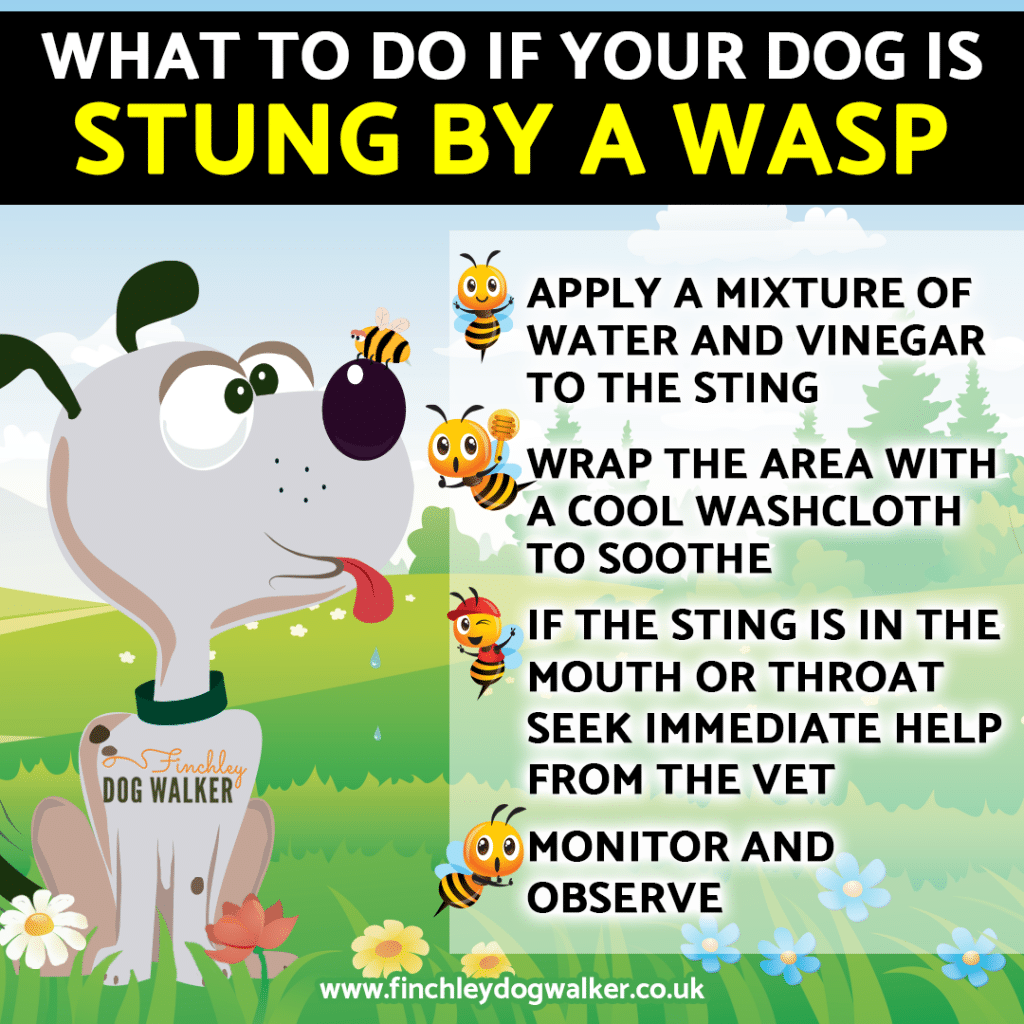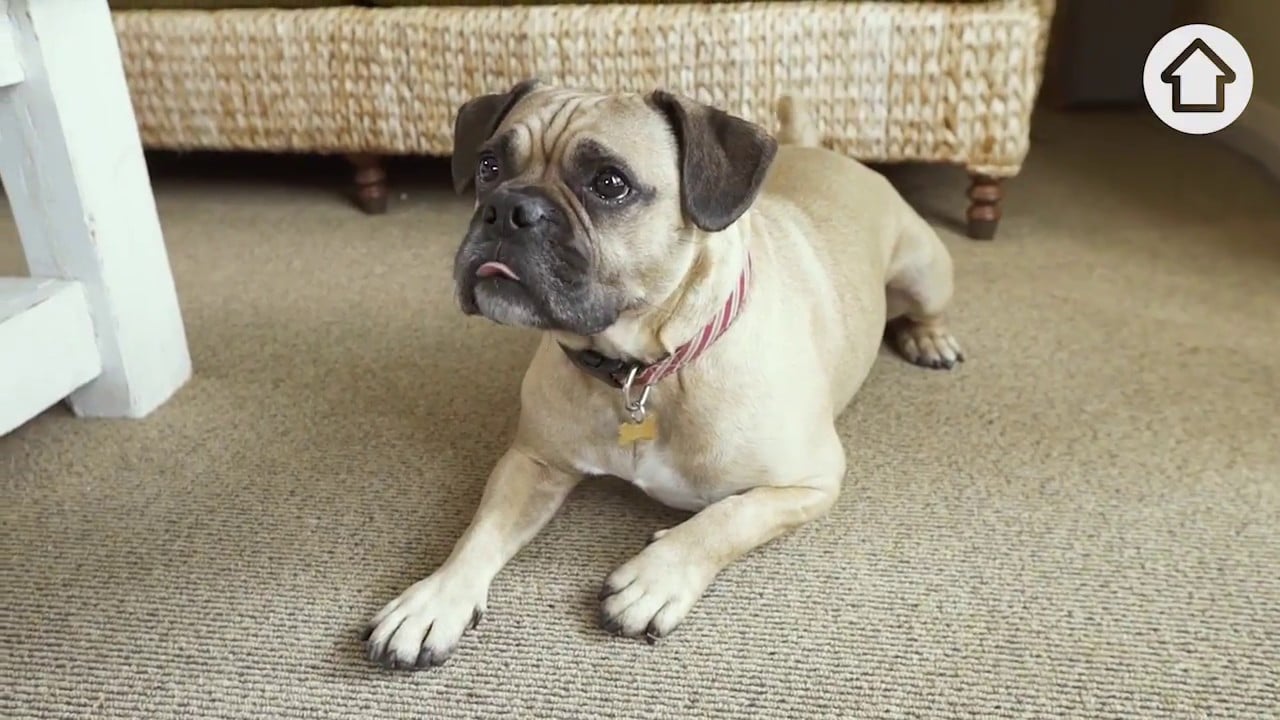Generally, when your dog gets stung by a bee or wasp, it will typically suffer some localised pain and maybe a mild swelling, just like humans. Your dog will be stressed after being stung, but fortunately, the pain will go away fairly quickly (although will seem like a lifetime to your dog).
In the same way, some humans can be allergic to wasps or bee stings, and so can dogs. If this is the case, then urgent treatment is required,]. This is also the same for any sting or bites in or around the throat or mouth or multiple stings.

How do I know if my dog has been stung
- Biting, scratching it paying more attention than usual to a specific area.
- Whimpering and whining
- Swelling in the area that has been stung by a bee or wasp
- Limping or refusing to put one of their paws down
- Pawing or rubbing the affected area, such as the mouth, face or throat
Danger signs to look out for after your dog has been stung by a bee or wasp
- Vomiting
- Having problems breathing
- Pale gums
- Weakness
- Diarrohea
If you notice any of these signs in your dog, you should contact your vet immediately for advice.
What to do if your dog has been stung
Remove the wasp or bee sting from your dog
You must remove the sting from your dog as quickly as possible; The best way is to use a credit card or something similar to gently and carefully scrape the venom sac out. Make sure you scrape from below the venom sac and don’t squeeze or pull the sting out, as this can release more venom and prolong the irritation.
Treatment for wasp and bee stings
Bees
Bee stings are acidic, so the best way to reduce the pain and swelling is to make a solution of Bicarbonate of Soda (Alkaline) and water and apply it to the affected area.
The easy way to remember this is BeeCarbonate of Soda
Wasps
Wasps are alkaline, the opposite of bees, so they can be treated with vinegar to help reduce the pain and swelling.
Not sure what sting it is
If you are unsure if your dog has been stung by a bee or a wasp, applying a cold compress to the affected area will reduce the swelling. This can be as simple as taking a clean, lint-free cloth such as a tea towel and running it under a cold tap, then placing it on the affected area for a few minutes.
You must remain calm to help keep your dog as quiet as possible and cool the affected area.
The first few hours after your pet has been stung are the most important. During this window, any signs of an allergic reaction will develop, so keep a close eye on it.
Can I give over-the-counter antihistamines to my dog
The answer is yes. However, before administering it for the first time, please check with your vet to ensure you have the right drug (piriton is usually okay) and understand the correct dose for your dog’s size and weight.
Below are some other articles by Finchley Dog Walker that we think you may be interested in
Legal Disclaimer:
Derek Chambers and Finchley Dog Walker are not veterinary professionals. Any advice, information, or recommendations provided are based on personal experience and general canine care knowledge. This content is not a substitute for professional veterinary advice, diagnosis, or treatment.
Under the Veterinary Surgeons Act 1966 & Exemptions Order 2015, only qualified veterinary professionals are legally permitted to diagnose, prescribe, or provide treatment for medical conditions. If you have concerns about your dog’s health or well-being, always seek advice from a qualified veterinarian before taking any action.

